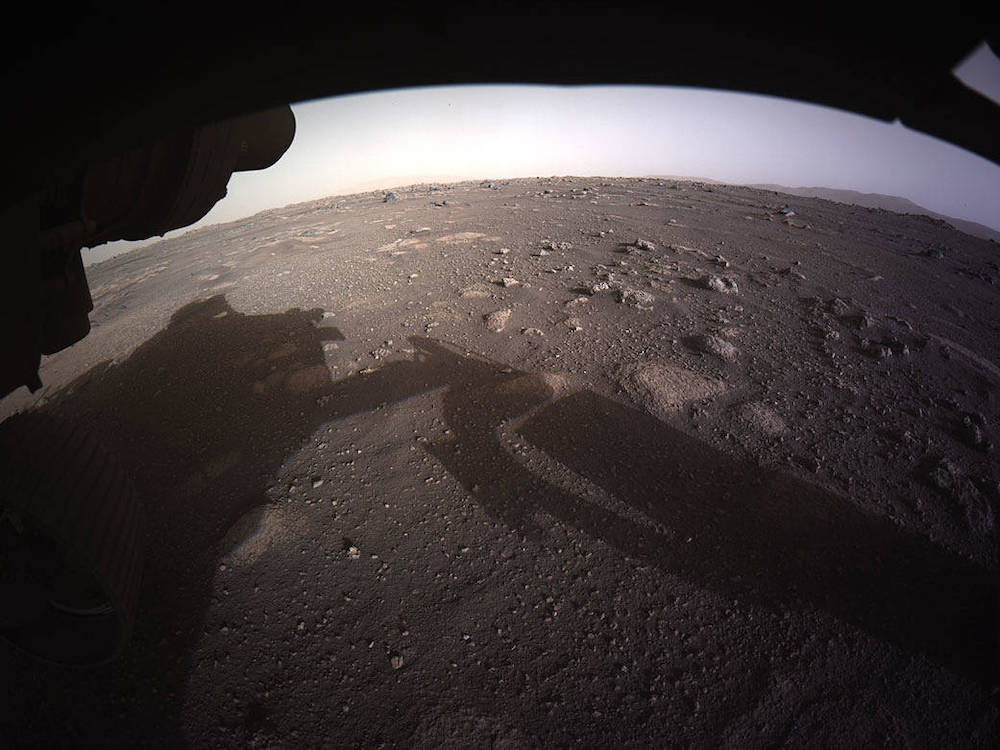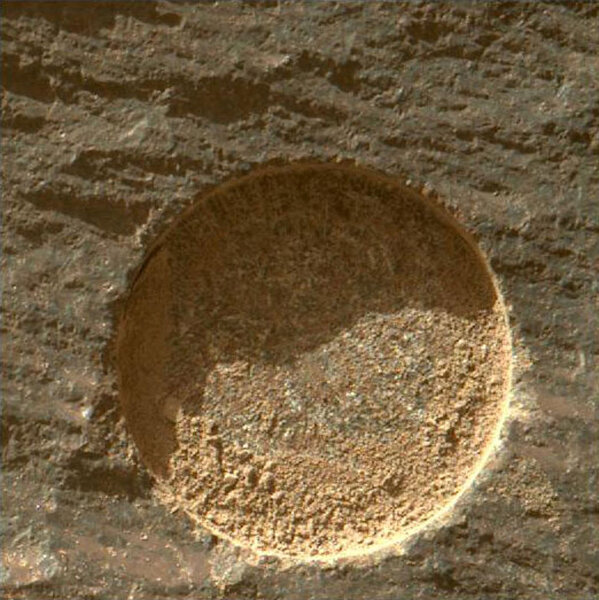Create a free profile to get unlimited access to exclusive videos, sweepstakes, and more!
Lasers are zapping purple rocks on Mars to find out about its ancient lake
To go back in time, you have to vaporize some rocks.

Mars is supposed to be the Red Planet, so why are splotches of purple showing up?
NASA’s Perseverance rover has been using its SuperCam instrument to aim lasers at mysterious purplish rock in Jezero Crater. It could reveal more abut how the lake that was once there formed and eventually vanished. The more times a laser beam is fired, the deeper it penetrates into the rock, meaning SuperCam has been zapping back millions to billions of years. This allows scientists on Earth to travel further into the distant past of Mars.
Perseverance isn’t the first to spot mysterious purple splotches. Curiosity and Opportunity both caught glimpses of purple out in the frozen Martian desert, but nothing like this. There are also far more purple rocks in Jezero Crater. When the laser is switched off and the plasma cools, it emits radiation that gives away what is in those strange rocks. Researcher Erin Gibbons of McGill University in Canada is a member of the team operating SuperCam, which heats the rock to about 18,000 degrees Fahrenheit, as each pulse vaporizes more of it.
“Our laser can vaporize a small amount of material that lets us penetrate into the rock surface,” she told SYFY WIRE. “This means we can investigate the interiors of Martian rocks, but we also have a lot of work to do to understand what may be going on beneath the surface. “
Gibbons, who keeps an eye out for features of interest in Jezero Crater (with the help of Perseverance’s 23 cameras) was the brains behind this SuperCam venture. The rover’s Navigation Cameras (aka NavCams) image the surface in stereo and can see even small objects, which would fit in the palm of your hand, from up to 75 feet away. NavCam images are used to determine the focus of SuperCam’s laser. Overlaying them with digital 3D mesh onscreen gives more insight into features surrounding the rover, such as size, shape, distance, and shadow.
Almost like a video game, the laser can be commanded to zap something with just a click, except it isn’t dealing with CGI aliens but ancient Martian rock that could tell us about a time before the entire planet dried up. There is an entire virtual command center that allows researchers to focus the laser and adjust its parameters before firing away. Commands for the laser and other functions are beamed up to Perseverance by this program. When it receives a SuperCam command, it eyes the target and auto-focuses before firing the laser.
After SuperCam blasts a shot, it will capture more images and record what kind of radiation, and how much, was emitted.
So what is in those purple rocks?
“Our preliminary assessment suggests the purple patches are rich in magnesium, chromium, and hydrogen relative to the rocks under them,” said Gibbons. “They have a similar chemical composition to the dust and fine-grained regolith, so one hypothesis is that the purple patches are a layer of compacted, hardened dust.”
There are still challenges ahead. The purplish stuff is still being investigated, and one of the greatest challenges the researchers face is telling the difference between the chemical signatures of the oddly colored rock and what lies beneath, not to mention the difference between it and the Martian dust scattered everywhere. That hasn’t stopped the team from thinking of more hypotheses. Martian winds evidently carved out rock hollows in which there are smudges of purple, which suggests that they formed long after the lake evaporated. That could further expose the most recent geological processes that altered this alien landscape.
As Perseverance continues to crawl across Jezero Crater, it will gather more data to give the researchers a much more thorough idea of what the crater was like when there was water. It could possibly suggest whether this lake might have been habitable. Some of the purple material will probably end up in at least one of the cores that the rover is sampling, which will someday make it back to Earth via the Sample Return Mission, and then straight to a lab where it can be analyzed. Gibbons is optimistic about where SuperCam is headed next.
“SuperCam will be absolutely instrumental in exploring the monolithic Western delta,” she said. “Through this sediment pile, we may learn about the chemistry of that ancient lake, its potential to support life, and the likelihood that it may preserve fossils.”
If anything ever lived on Mars and is trapped in that rock, lasers just might unearth it.



























